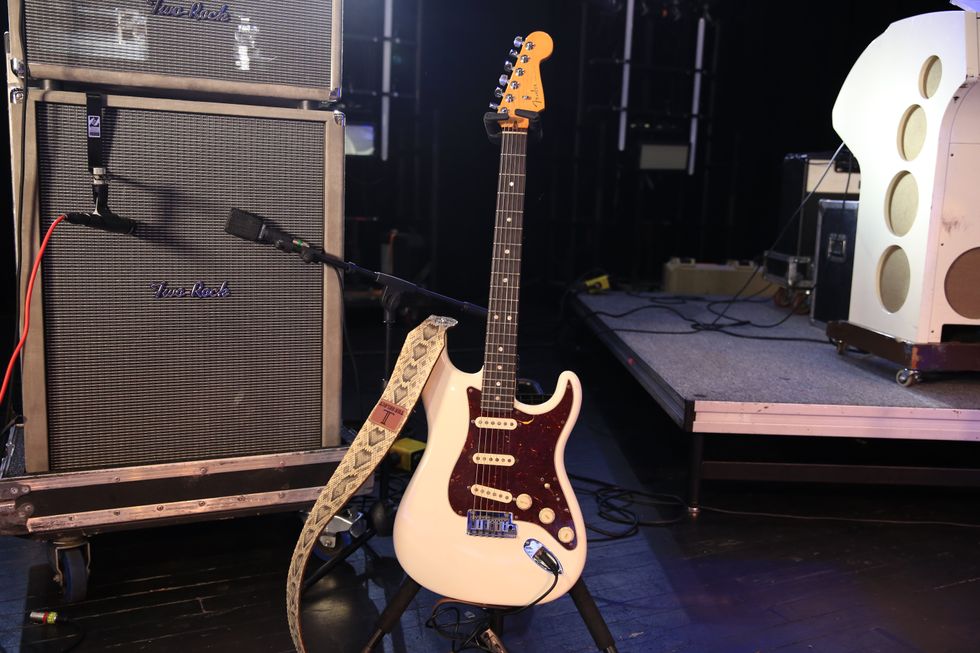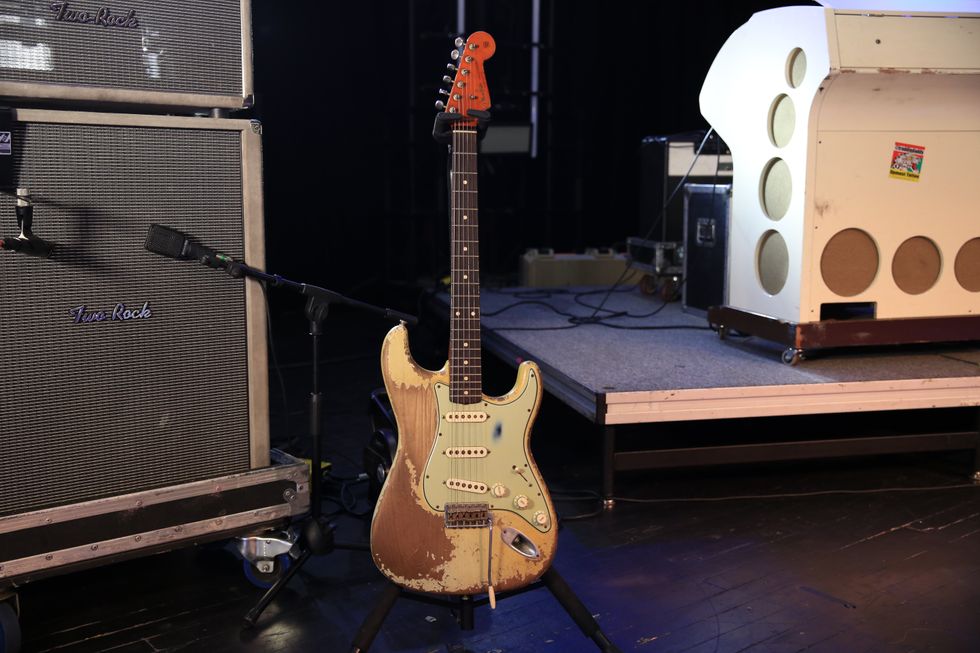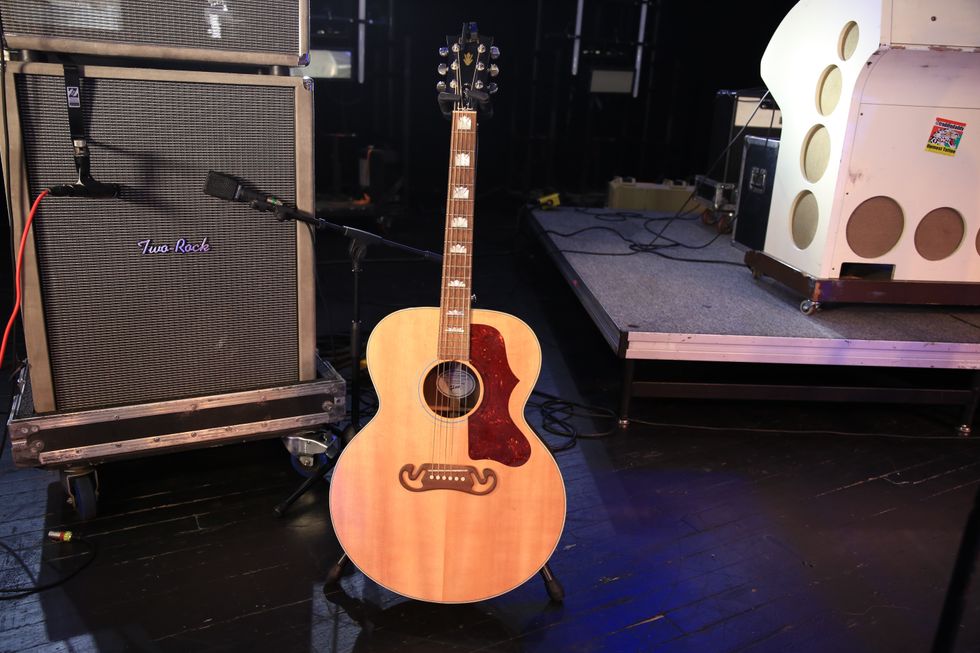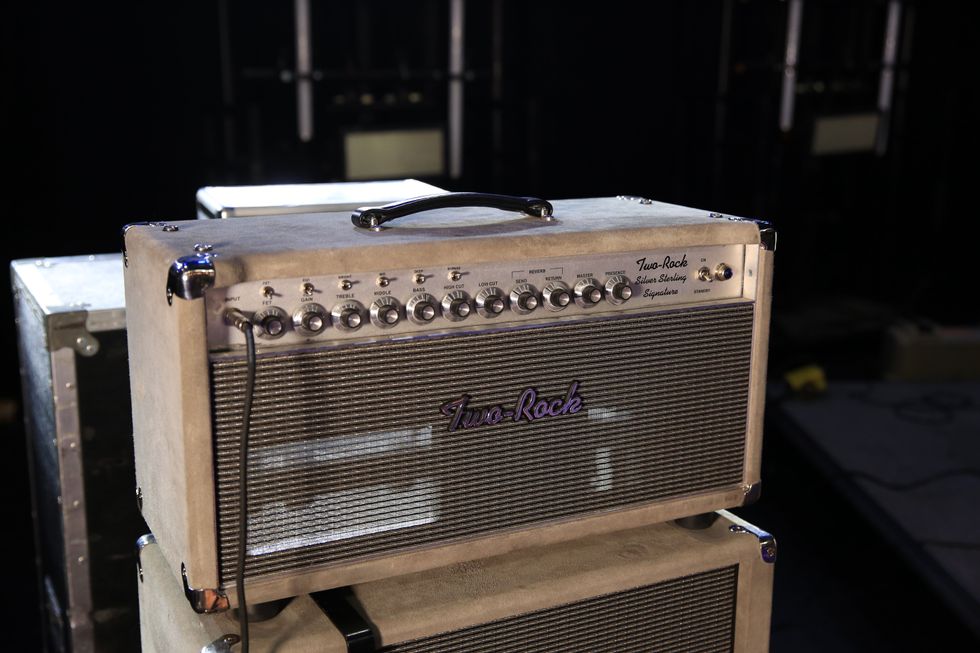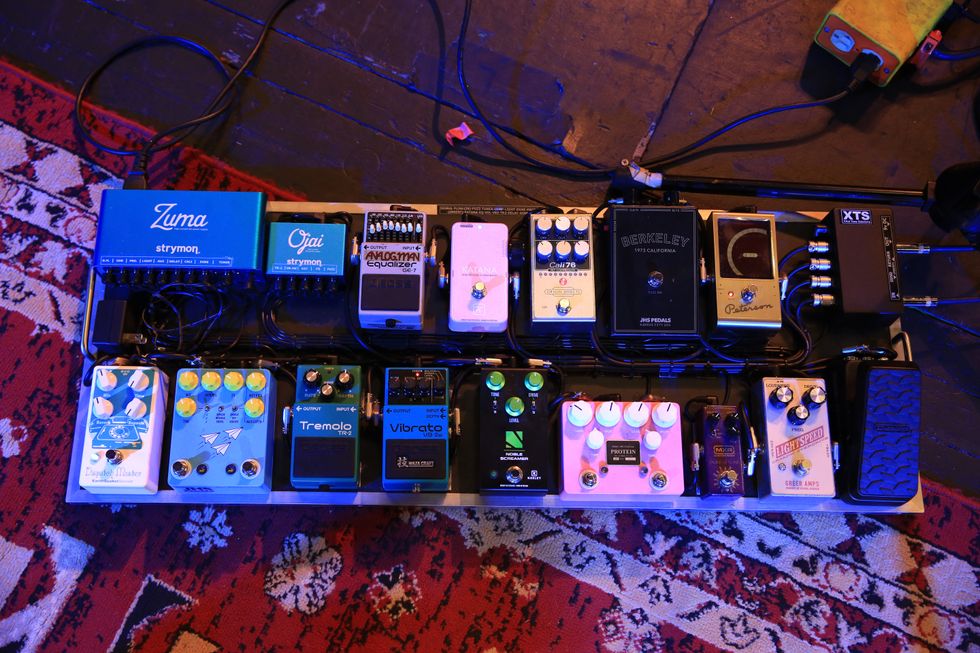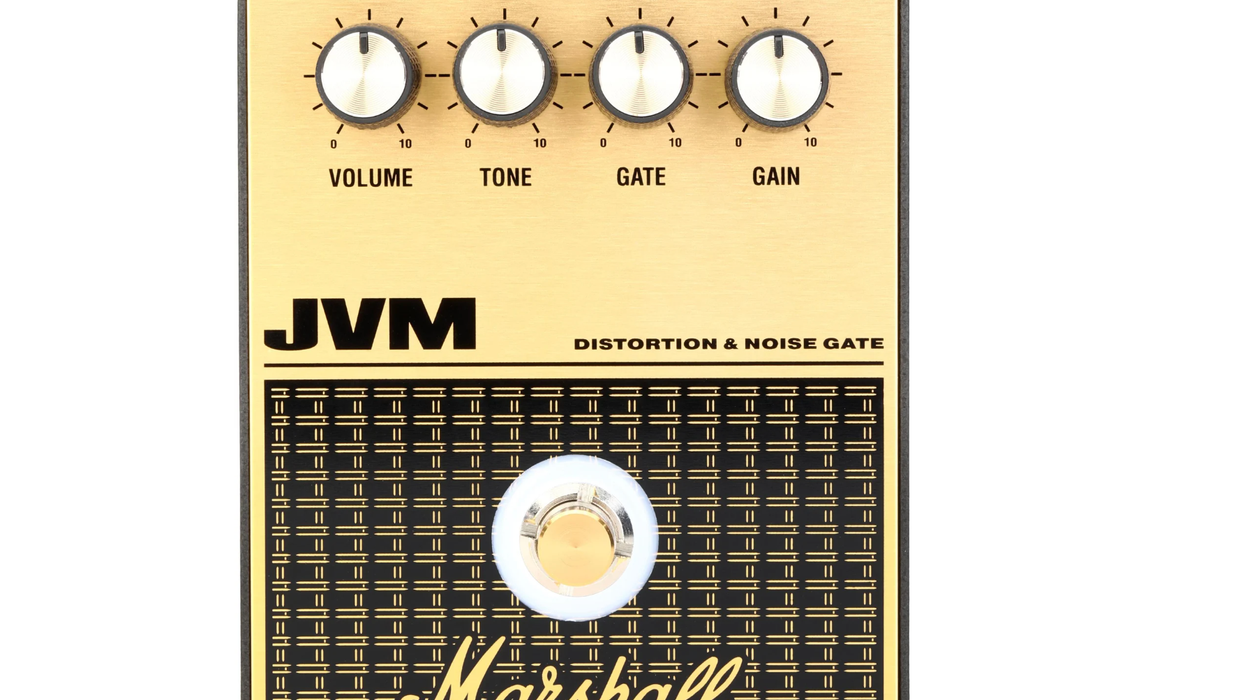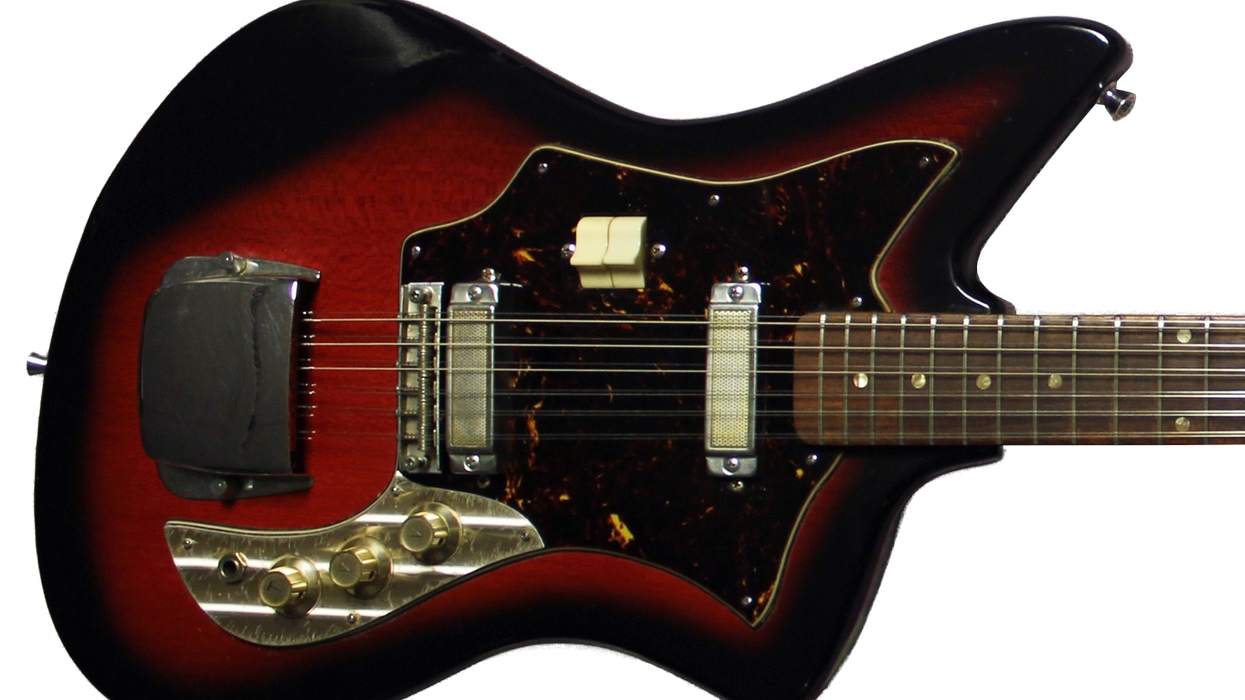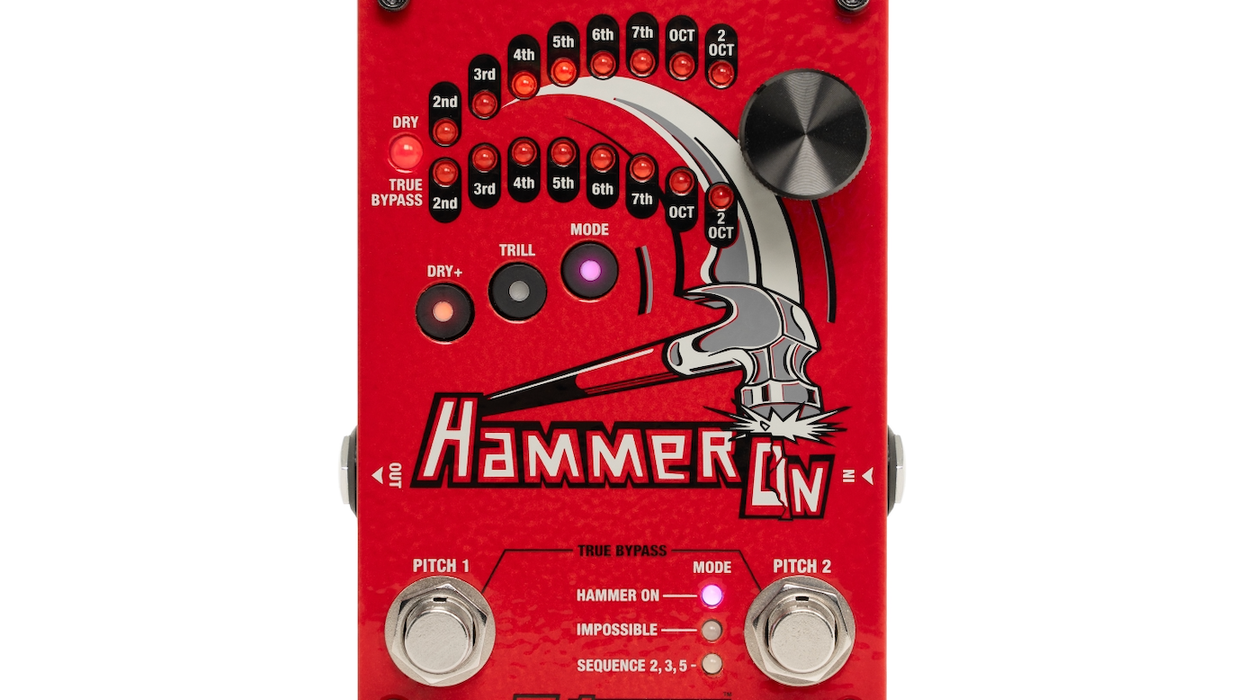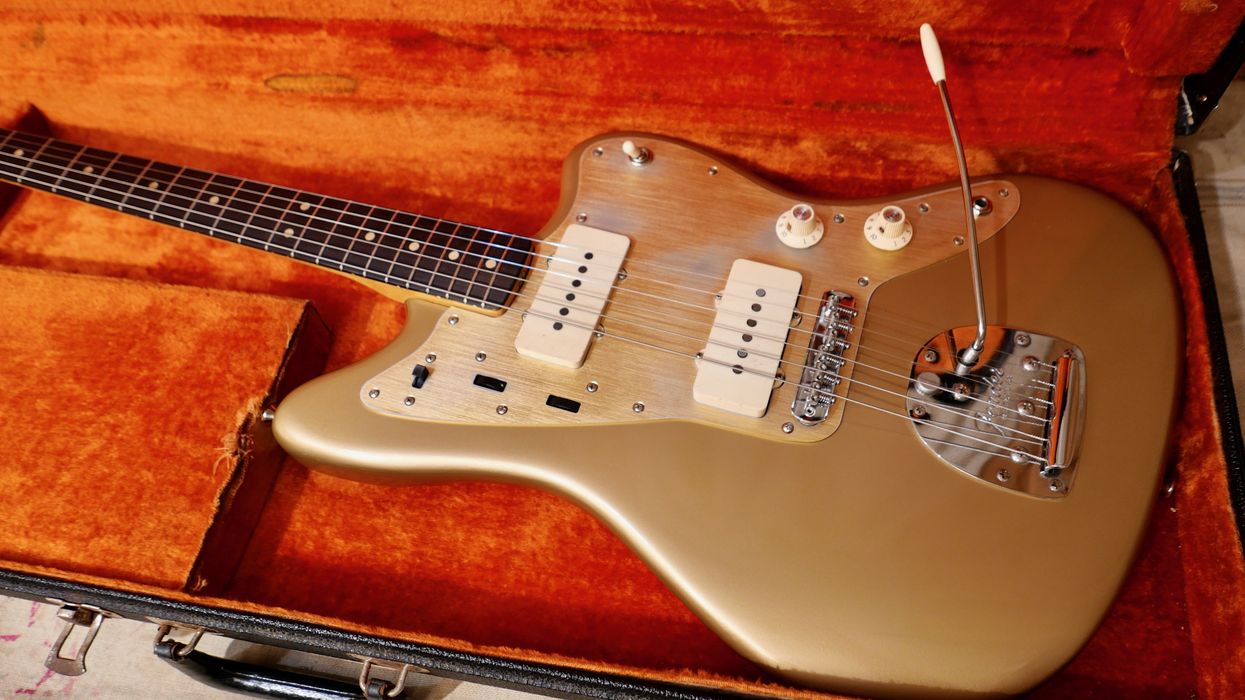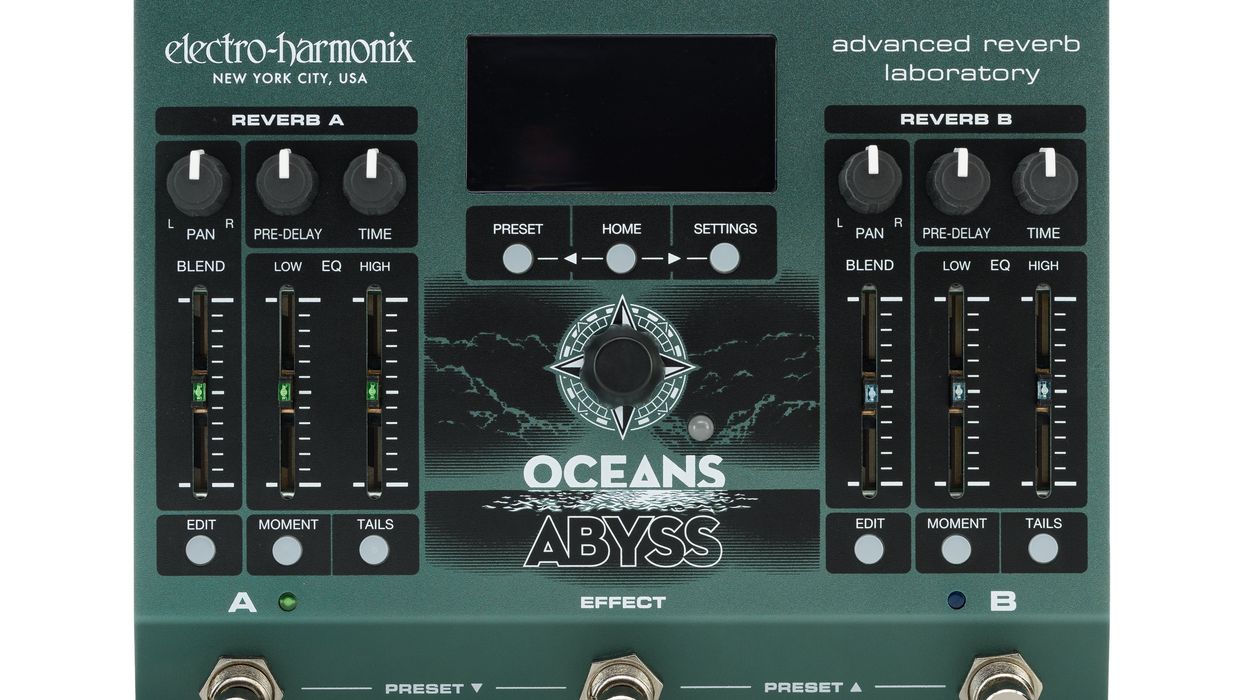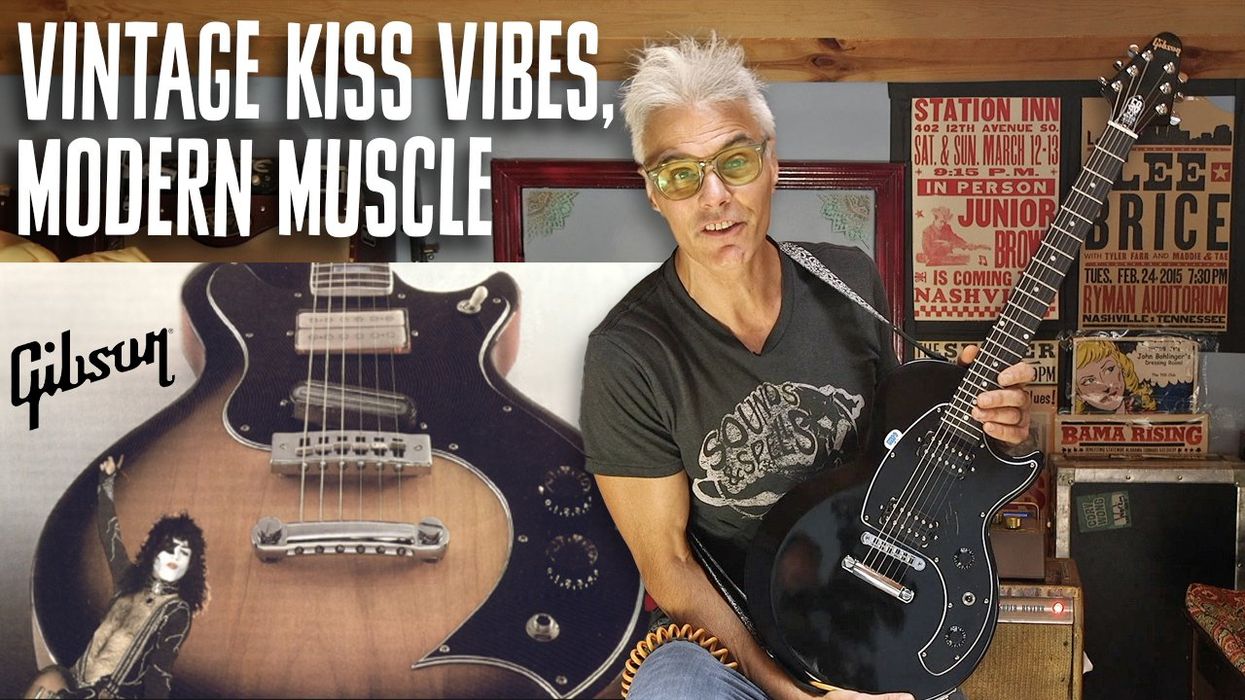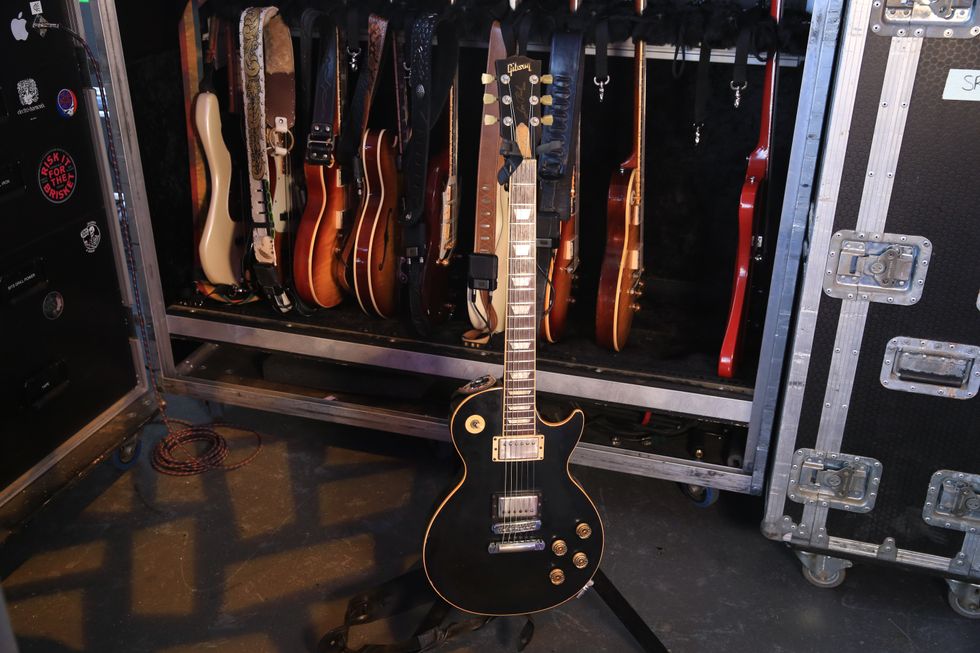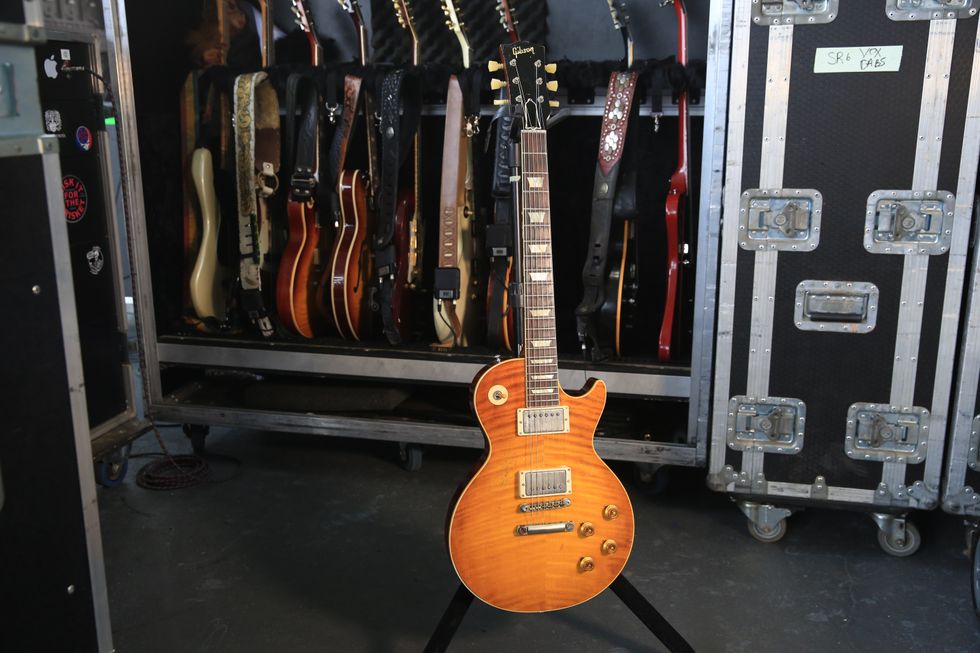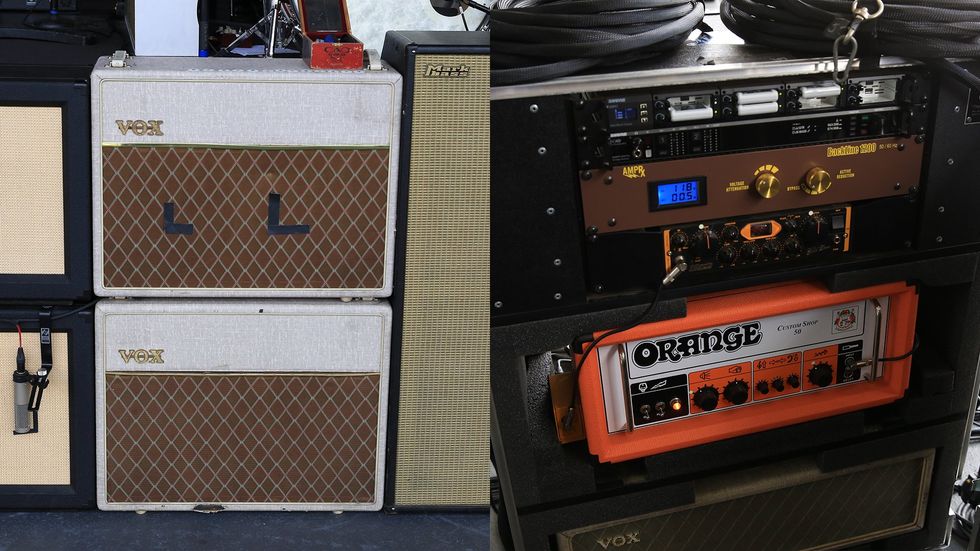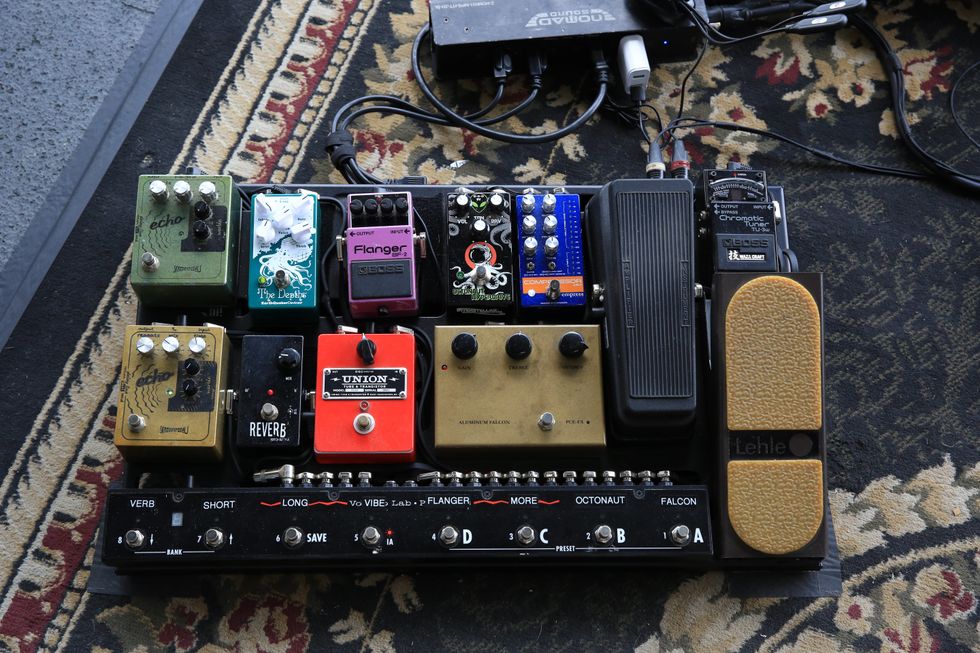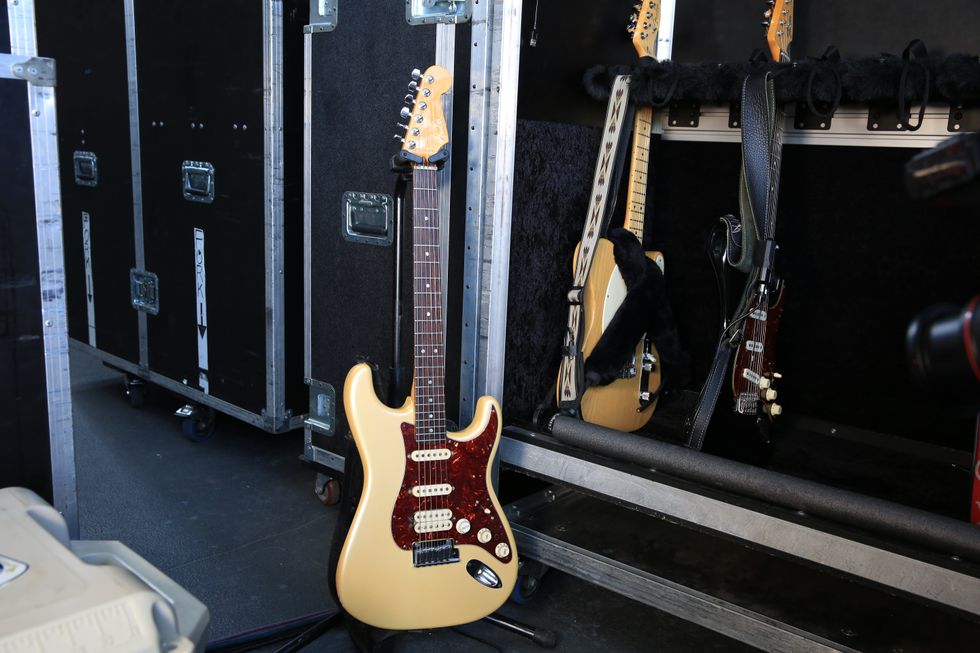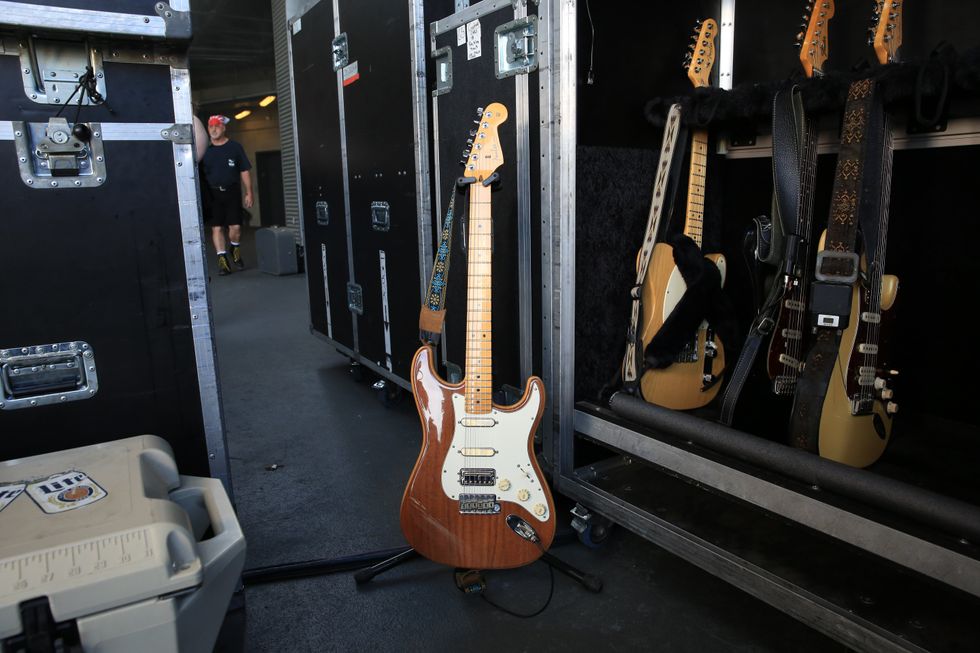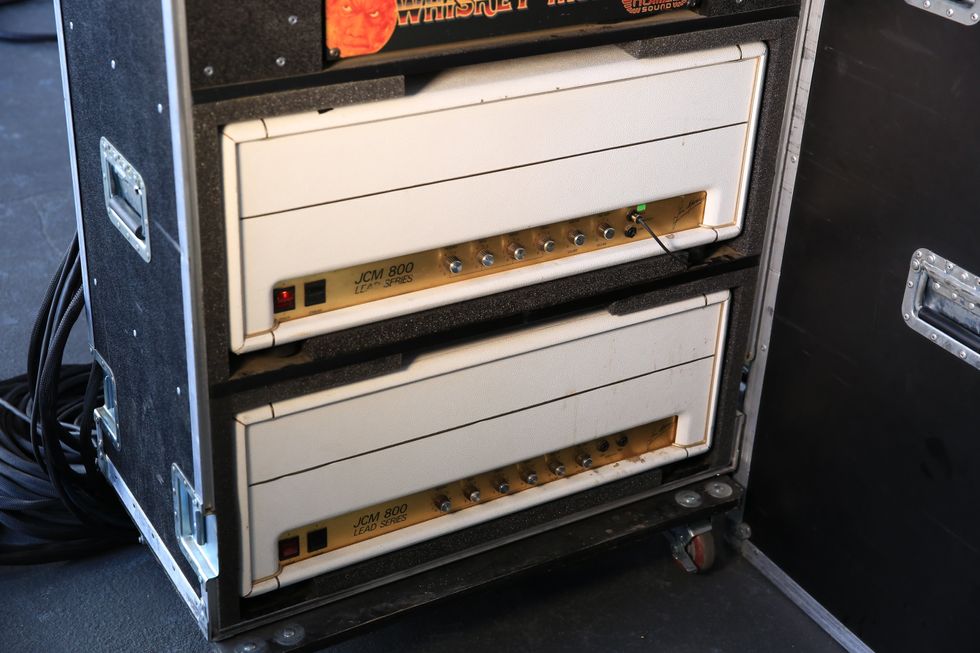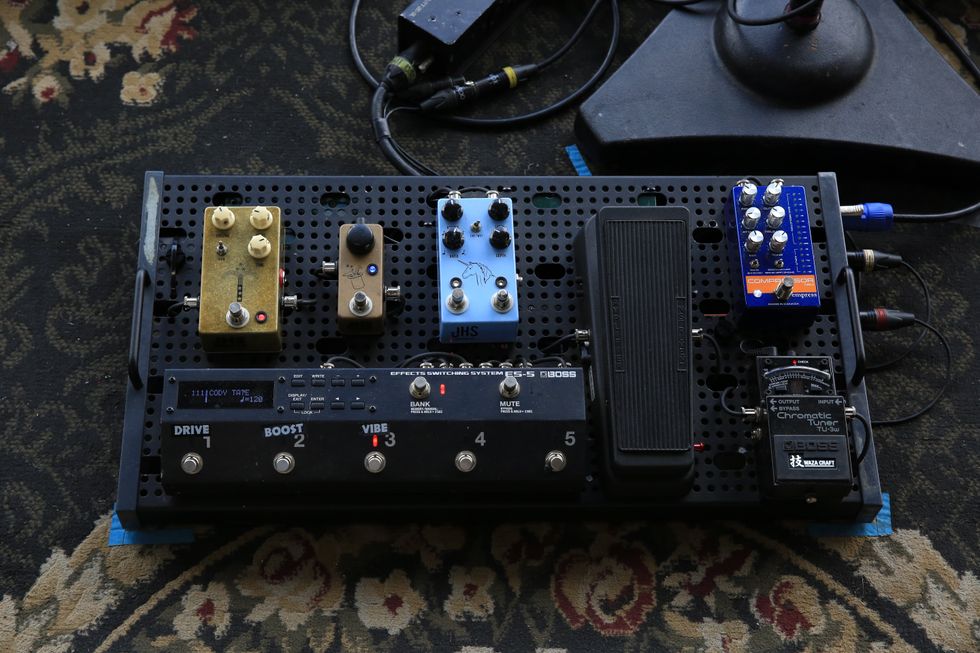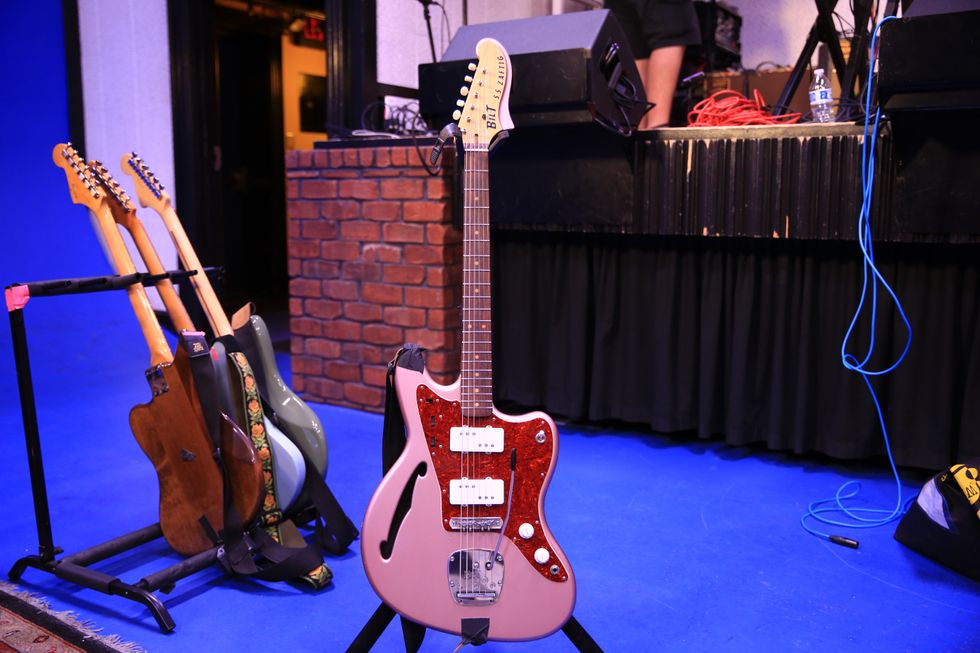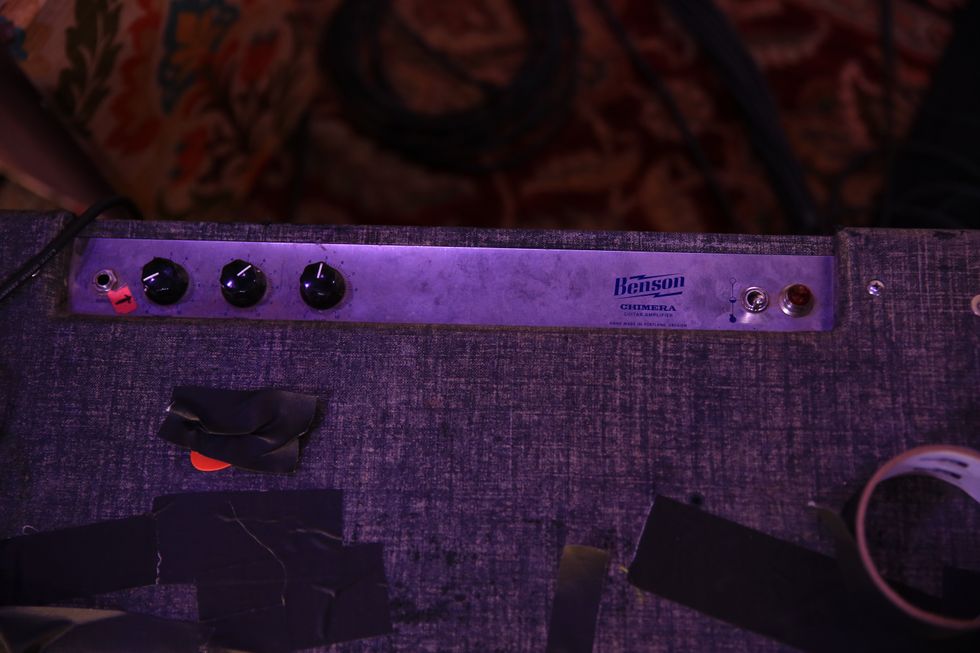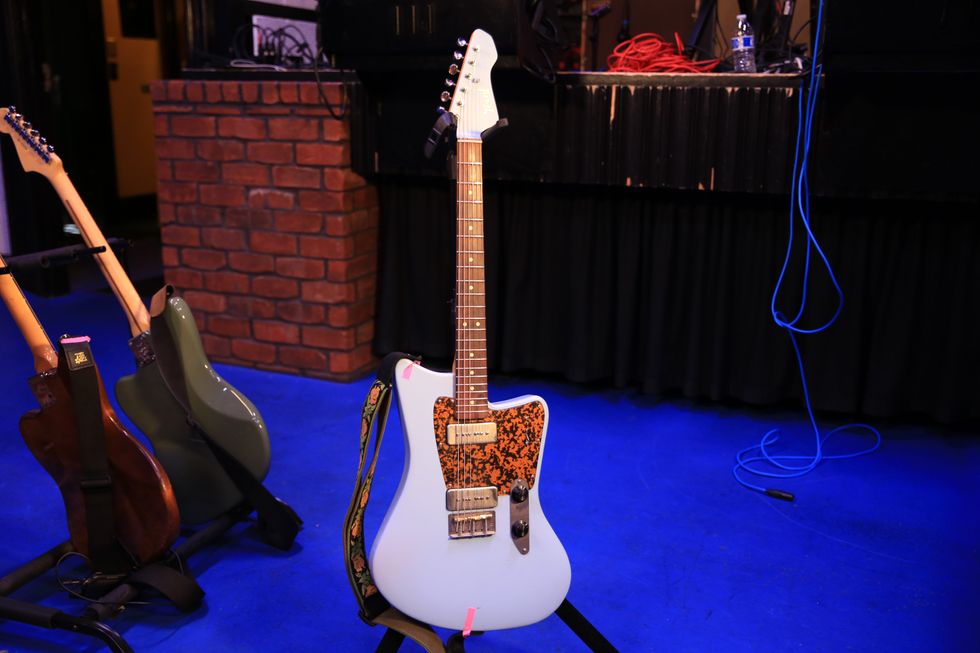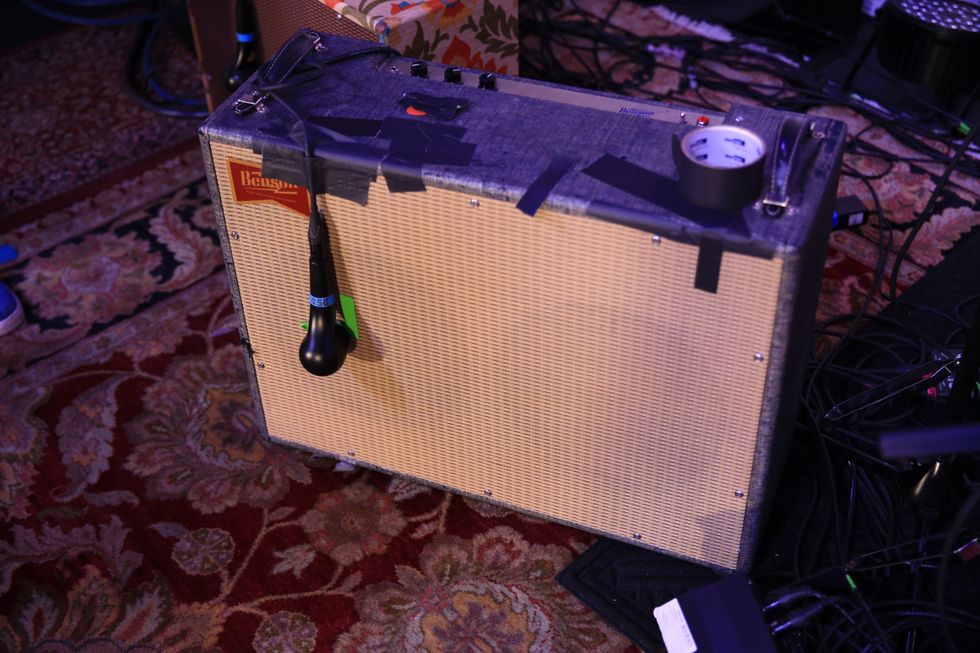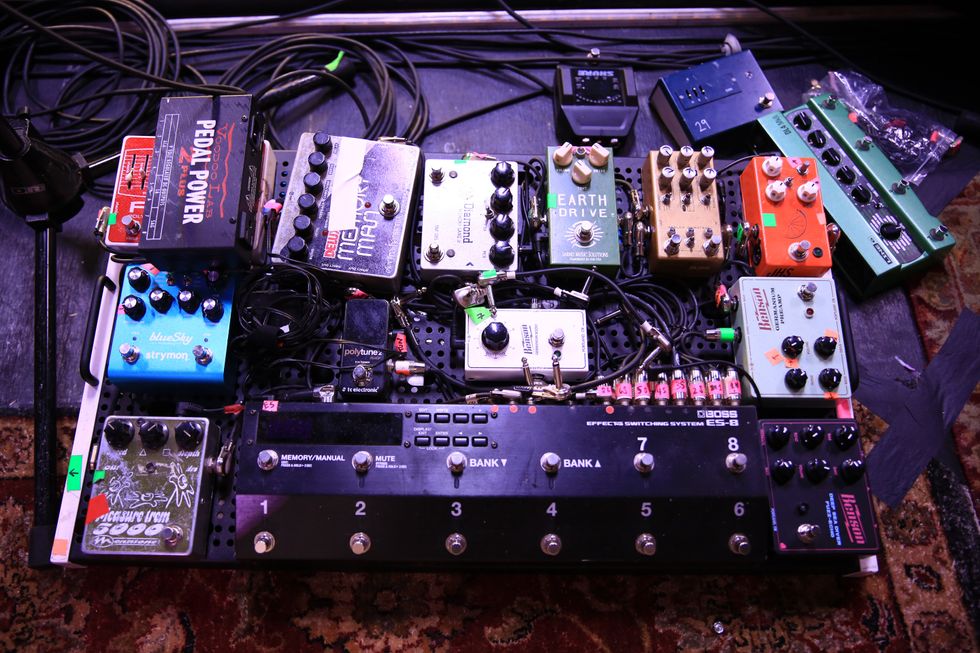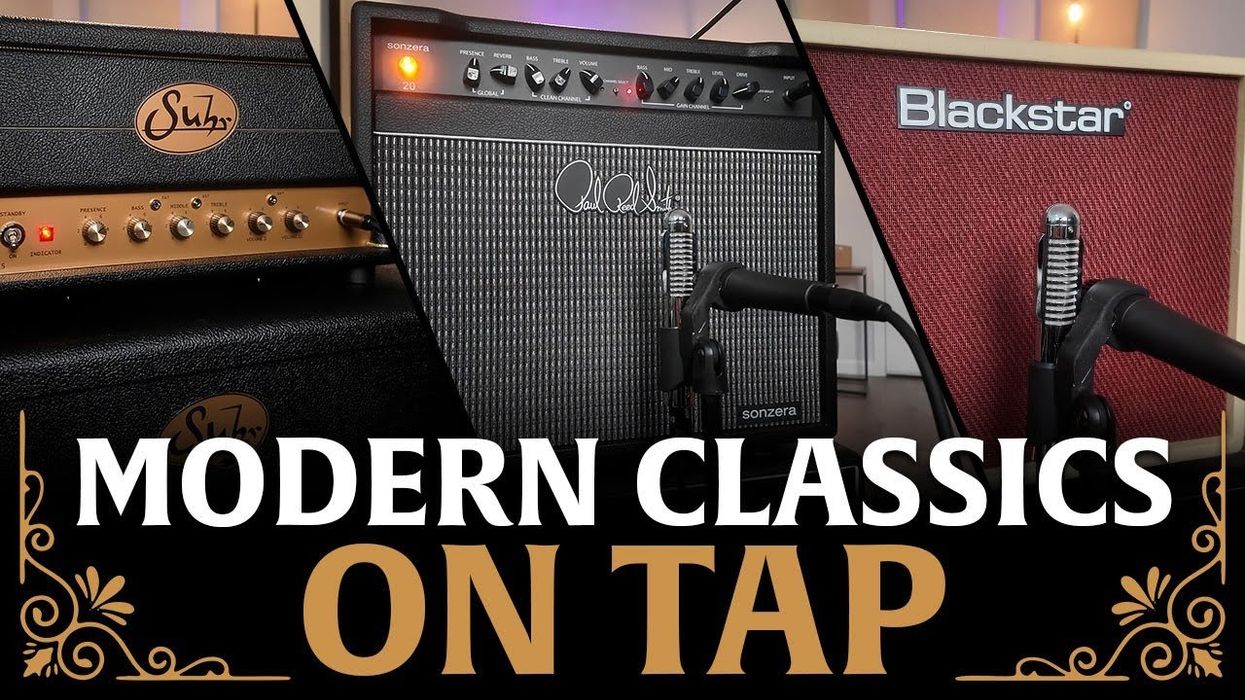If you’ve had the pleasure of seeing Brian Setzer in concert in the last 10–12 years, one of the coolest moments—from both musical and a gear-nerd perspectives—was probably when he busted out a long-scale guitar with a oddly shaped pickguard and proceeded to twang the crud out of “Mystery Train.”
That guitar is a baritone based on a prototype built by Tom Jones from TV Jones. Setzer has long been an ambassador for TV Jones—he uses TV Classics in nearly all his Gretsches—and he’s played a huge role in the popularity of Jones’ larger pickup line. In addition to being stock on many high-end Gretsches, Jones’ pickups are stock in the Fender Custom Shop’s La Cabronita line, and are a highly sought-after upgrade item for many tone freaks.
But while Jones is primarily known for his kick-ass variations on vintage Gretsch Filter’Tron pickups, he also offers custom-order instruments such as the Model 10 solidbody and Spectra Sonic Supreme semi-hollowbody. About 10 years ago, Jones also sold baritone guitars based on the original prototype that Setzer debuted at his June 29, 2000, gig in Kettering, Ohio, where he used it to perform “I Won’t Stand in Your Way” and “Mystery Train” (check out the fantastic video of Setzer playing the latter during his 2006 Japan tour on YouTube). Now, a decade later, Jones has brought that guitar—the Spectra Sonic C Melody baritone— back into the fold.
Supremely Designed
From top to bottom, the 29.4"-scale C
Melody is an impeccably built instrument.
Its 1.9"-thick, chambered alder body is
topped with a beautifully figured (but not
gaudy) maple cap finished in nitrocellulose
lacquer and bound with white-and-black
celluloid. The TV Jones Classic bridge and
Magna’Tron neck pickups are governed
by aluminum-knobbed volume and tone
controls, as well as a 3-position Switchcraft
toggle. The U.S.-made Bigsby B11 vibrato
is paired with a Tune-o-matic-style bridge
featuring notched brass saddles.
The 3-ply, U-shaped maple neck joins the body at the 16th fret and features a bound, radiused ebony fretboard with 22 medium frets and classy little popsicle-shaped inlays. The bound headstock features a 14-degree string-break angle, a 44 mm Delrin nut, Sperzel tuners, and a mother-of-pearl logo inlay.
Supremely Melodious
To test the C Melody’s tones, I plugged
it into a Goodsell Valpreaux 21 with a
ceramic-magnet Jensen Falcon 12", as well
as a 12" extension cab loaded with WGS
ET-65 speaker based on a 65-watt, Rola-era
(pre-1970) Celestion. For tonal variety, I
also augmented the Valpreaux’s clean and
overdrive tones with a Pigtronix Fat Drive
and a 2-knob Keeley Compressor.
From the outset, the C Melody—which was designed to be tuned C to C in order to be more horn-friendly with Setzer’s big band—was a dream to play. If your primary experience with twang-oriented baritones is with the face-slappingly affordable models Danelectro has been putting out since the ’50s, playing the TV Jones will feel like moving from a cool old Ford Mustang to a tricked-out hot rod. And I say that with all due respect to Danos—they’re fun as hell and sound killer, even if playing comfort and elegance aren’t their strengths. In contrast, the Spectra Sonic C, with its stock .013–.060 strings, doesn’t have the overly taut string response or cramped feel that some Dano baris have.
Although the C Melody’s scale is longer than most baritones on the market, the main thing most players will notice when transitioning from a 25 1/2"- or 24 3/4"- scale instrument isn’t how far you have to reach to get to open-position chords (doing that feels remarkably normal), but rather how there’s more real estate allotted to each fret. This isn’t as noticeable when you’re playing first-position chords—which, for the record, sound as grand as a piano—but it does become more of an adjustment when you’re playing barre chords or more complicated fingerings around the middle of the neck.
Another TV Classic
I’m already a fan of TV Jones pickups—I’ve
got Classics in a Gretsch hollowbody, and a
Magna’Tron in my Schecter Ultra III—but
when playing them in the Spectra Sonic C
I stoked a newfound admiration. It seems
having the guy who designed them also
design the circuitry and the guitar they’re
installed in pays big dividends: The Classic
bridge barks and twangs with authority
whether blasting through some pedal grit
or running naked into the amp, and yet
in the C Melody the Classic is also devoid
of some of the nasally midrange I’ve heard
from it in other guitars. The resulting tones
won’t let you down whether you’re plucking
spy-movie themes, Travis-picking rockabilly
lamentations, power-chording indie-rock
craziness, or fingering big, complex inversions
that use open notes to crisscross the
fretboard and the frequency spectrum.
The staggered cylinder magnets in the neck Magna’Tron do exactly what Jones intended them to do—they deliver your notes with an angelic and bell-like hollowness when you’ve dialed in a clean tone. With overdrive they ring out thick and gristly. And when you combine the two pickups, that’s where you’ll find the most piano-like blend of bite and corpulence.
Ratings
Pros:
Exquisite tones and versatility. fine craftsmanship. A rarity in the current baritone market.
Cons:
Somewhat pricey.
Tones:
Playability:
Build:
Value:
Street:
$3,125
TV Jones
tvjones.com
Perhaps the most pleasantly surprising thing about the TV bari’ is the tone circuit. Although I typically feel limited by the tone circuits in most guitars—I can usually get the widest range of tones by keeping it full on and varying my picking approach (harder pick attack for more grit and brightness, more flesh for softer, warmer sounds)—this is the first instrument I’ve played in a long time where I felt like using the tone knob was truly palette expanding. Jones says this is due to the .0068 μF capacitor he pairs with the 500k CTS audio-taper tone pot. I’ll admit my eyes start to glaze over when people start getting that deep into capacitor values, but I also know my ears don’t lie to me: Reining in the C Melody’s tone control doesn’t make it sound like it’s had all the dynamics sucked out, nor like you’ve thrown a blanket over your amp. Rather, it leaves the treble and high-mid frequencies that are crucial to transmitting little nuances you can get with clever use of plucking and muting techniques while changing the bass and low midrange in a way that makes the pickups sound almost like another set entirely. Suddenly each pickup position—but particularly the middle and neck selections—sounds richer, rounder, and warmer—like caramelized tone candy.
One other tone-related note: As many baritone players have found over the years, a good compressor is by no means crucial to getting very satisfying results from the Spectra Sonic C, however it does open the door to a whole world of wider sonic applications. The C Melody took to my Keeley like they were best pals, focusing and crisping-up the tone in ways that deliciously complemented techniques such as fingerpicked rhythms.
The Verdict
Given the C Melody’s association with two
very particular legends, it’s certainly no
surprise that it doesn’t disappoint in any
regard other than the semi-steep price. But,
considering how few new baritone guitars
from reputable builders are available at
present—MusiciansFriend.com currently
lists seven, five of which are geared toward
hard-rock or metal—it’s not a stretch to say
the classic-toned C Melody is justifiably
priced, especially considering its impeccable
sonics and attention to detail.
Watch our video demo:








